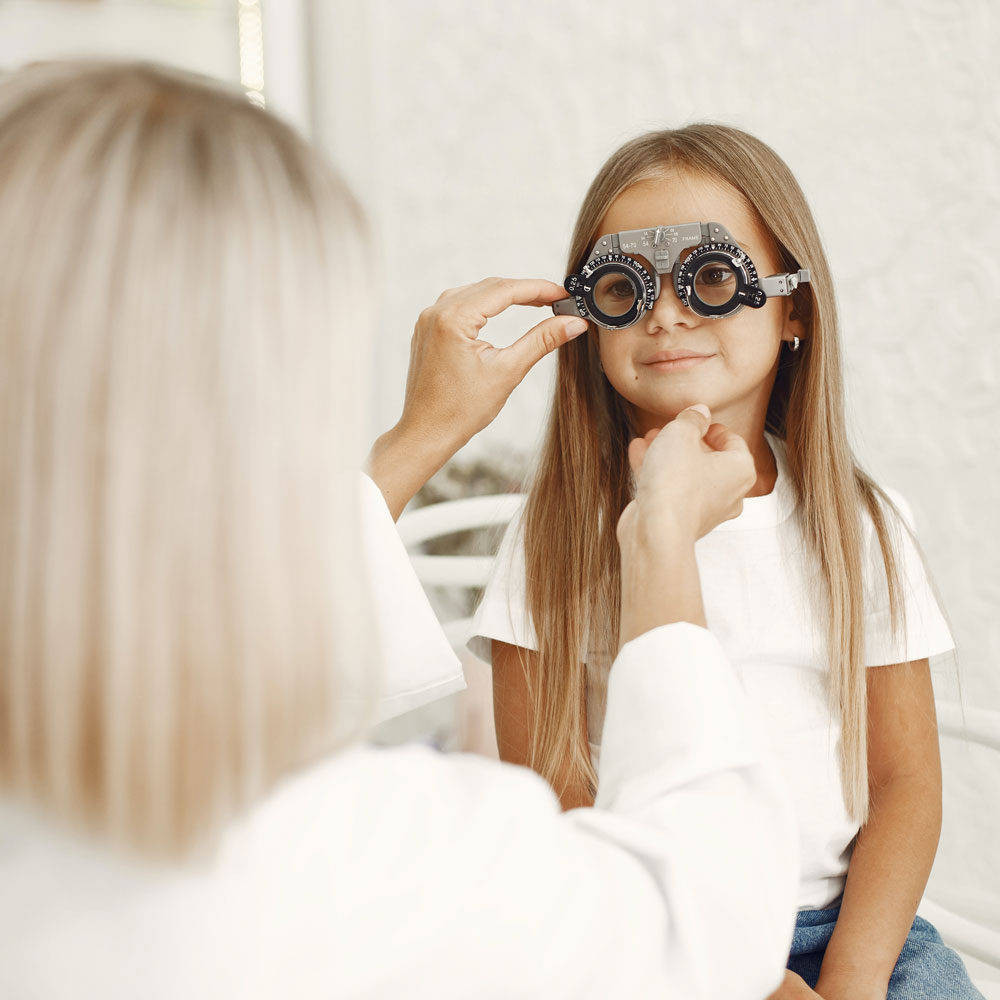
About Eye Center of Houston
Discover Affordable, Family-Friendly Eye Care
Your Vision, Our Passion: At Eye Center of Houston, we believe in giving you the attention you deserve. Our practice is built on a foundational value: patience. We don't rush; we listen, understand, and care.
Family-Friendly, Multilingual Experts: Our family-friendly environment and multilingual staff ensure a welcoming experience for all. Whether you speak English, Hindi, Urdu, or Spanish, we're ready to assist you with the highest level of care.
Flexible Scheduling for Your Convenience: Your time matters to us. That's why we offer a variety of time slots to fit your busy life. Early morning or late evening, we're here to accommodate your schedule.
State-of-the-Art Eye Care Services: From comprehensive eye exams to advanced treatments, we utilize the latest technology to ensure the best outcomes for your vision.
Join Our Eye Care Family: Choose Eye Center of Houston, where your vision is our priority. Experience eye care that goes beyond the ordinary. Schedule your appointment today and see the difference patience makes!

Our Eye Care Services

Comprehensive Eye Exams
From updating your eyeglasses prescription to detection and treatment of eye diseases, comprehensive eye exams are important for continued visual health.

Pediatric Eye Care
Clear vision is an essential part of a child’s healthy development and learning. Regular pediatric eye exams can help detect and treat common issues.

Dry Eyes
Do you have dry, itchy, gritty-feeling eyes? Dry eye syndrome is a very common condition. We offer dry eye treatments at our eye care clinic.
Children with myopia are at higher risk for potentially sight-threatening vision problems. Save your child’s vision with myopia management.
Vision therapy is a scientifically-proven regimen of in-office and at-home exercises to train the brain and eyes to work together better. Find out how we can help.
During a contact lens exam, your eye doctor will check if you are a good candidate for contacts and find the best type of contacts for your needs..
Eye emergencies such as severe pain in the eye, or foreign objects puncturing the eye require immediate attention. Contact us immediately.
Eye diseases such as glaucoma and macular degeneration can cause severe loss of vision if not diagnosed and treated early. Our eye care team can help.
If cataracts go untreated, they can cause total blindness in the affected eye. We can help with co-management of your cataract removal surgery.
Astigmatism can cause vision problems such as blurred or double vision at all distances. Find out what you can do to correct astigmatism and see your best.
Macular degeneration can cause severe central vision loss if not detected and treated early on. We can help preserve your vision.
Over 50% of people living with glaucoma don’t know they have the disease as it shows no symptoms. Early detection and treatment can prevent blindness.
The ups and downs of diabetes can be difficult to navigate. How can diabetes affect your eyes? How can you and your eye doctor keep them healthy?
While vision can change drastically in the senior years, these changes shouldn't have to impair one's quality of life. The earlier these problems are detected and treated, the more likely proper eye care can help you retain good vision.
Orthokeratology is a non-invasive vision correction alternative to LASIK. Put in the specialty lenses while you sleep, and experience better vision in the morning.
Eyeglasses & Frames
Designer Frames
Our extensive optical section offers a wide variety of eyeglass frames in every style, material & design. Come visit us today to see for yourself!
Our expert optical team can find just the right pair of glasses for you to be confident and look your best.
Lens coatings improve visual comfort, make it easier to clean your glasses and ensure your lenses last longer. Coatings include anti-scratch, anti-reflective, photochromatic and UV / blue light filters.
Contact Lenses
Contact Lens Fitting
We offer a wide range of contact lens options from dailies, monthly to multifocal contact lenses for crystal clear vision and superior comfort.
During a contact lens exam, your eye doctor will check if you are a good candidate for contacts and find the best type of contacts for your needs.

40% Off Frames
*Requires purchase of a complete prescription pair, including frame and lenses. Does not include Barton Perreira, Cartier, Cazal, Chanel, Cutler and Gross, Dior, Dita Lancier, Fendi, Gucci, ic!Berlin, l.a. Eyeworks, Maui Jim, Michael Kors, Nifties, Oakley, Oliver Peoples, Persol, Ray-Ban, Robert Marc, Silhouette, Tiffany & Co., Tom Ford, WOOW, accessories, contact lenses, or medical procedures. Cannot be combined with any other discounts, promotions, or insurance plans. Not valid on previous orders. Other restrictions may apply. See practice for full details. Offer valid 04/08/2024-06/16/2024. 24AEG-729313




















